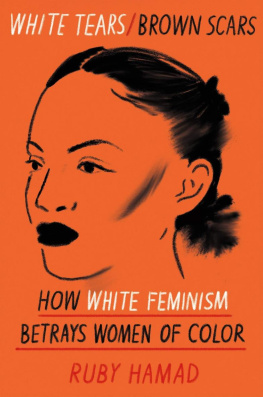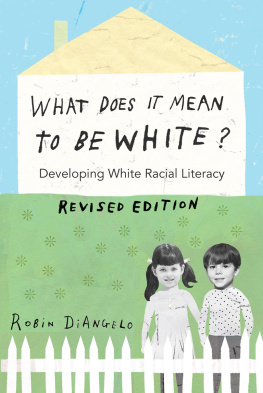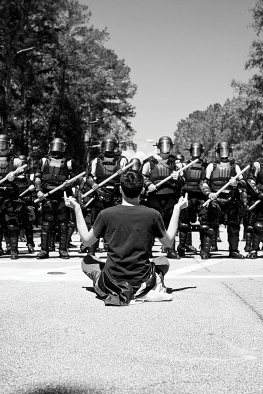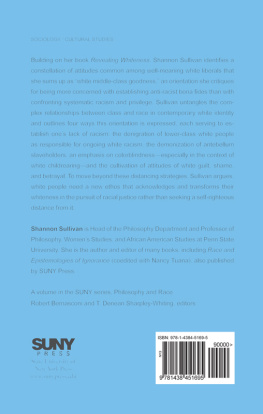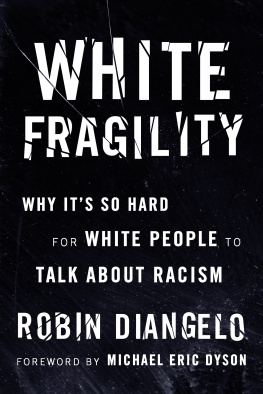White Tears/Brown Scars is a powerful and scholarly critique of white-privileged innocence. This is essential reading for anyone surprised that 52% of white women voters chose Trump. Hamad has written a devastating analysis of the white Damsel and the way her tears and dual status are routinely weaponised against much of the globe. If (racial) ignorance is bliss, then this book is a shattering of some supremely comfortable white illusions about race and gender, in Australia and beyond.
Melissa Lucashenko
Reading White Tears/Brown Scars is not an easy experience, but it is a life-affecting one. Despite Ruby Hamads remarkably concise but insightful review of racism, colonialism and life in the modern West, this is a deep exploration of how our circumstances, behaviours and unconscious attitudes shape power dynamics and our existence as humans on a planet we ravage daily.
This is also, more specifically, a nuanced, multi-layered portrait of the place of white women in the West, their role in upholding white supremacy as a norm, and how they relate to women of colour.
As an Arab woman growing up in the West, I had come to accept, too often, the demeaning treatment I received from my white peers, without interrogating it. For me, and for many like me, it has been a case of quiet survival, never raising ourselves too high because when we do, we threaten not only the structures we co-inhabit, but the relationships that work as long as the power imbalance is maintained.
It is not correct to say that Hamads book is simply eye-opening or a revelation. It is an uncovering of so much we have hidden away, afraid to acknowledge even to ourselves. Reading this book, it occurred to me how deeply women of minorities internalise their experiences of mistreatment or discrimination.
What you read in Hamads book cannot be unread or overlooked or forgotten. But commendably, this book is not a self-pitying rant with no way forward. It prompts every reader to revisit their experiences through a revised lens, but not to remain in a state of anger or repose. This book asks us all how we can live together. It asks not just how we can do better, but how we can do right so that humans, no matter their class, their skin shade or their cultural conditioning, can claim a place in society that is fair and just to all.
Amal Awad
WHITE
TEARS
BROWN
SCARS
WHITE
TEARS
BROWN
SCARS
RUBY HAMAD

MELBOURNE UNIVERSITY PRESS
An imprint of Melbourne University Publishing Limited
Level 1, 715 Swanston Street, Carlton, Victoria 3053, Australia
www.mup.com.au
First published 2019
Text Ruby Hamad, 2019
Design and typography Melbourne University Publishing Limited, 2019
This book is copyright. Apart from any use permitted under the Copyright Act 1968 and subsequent amendments, no part may be reproduced, stored in a retrieval system or transmitted by any means or process whatsoever without the prior written permission of the publishers.
Every attempt has been made to locate the copyright holders for material quoted in this book. Any person or organisation that may have been overlooked or misattributed may contact the publisher.
White Fragility: Why Its So Hard For White People To Talk About Racism, Robin DiAngelo 2018
Reprinted with permission from Beacon Press, Boston, Massachusetts
Text design and typesetting by Megan Ellis
Cover design by Peter Long
Author photo courtesy Onni Elliott
Printed in Australia by McPhersons Printing Group

9780522875584 (paperback)
9780522875591 (ebook)
For the forgotten ones

He hit me and wept
Then he was first to protest
Arab proverb
Contents
Authors note
Writing about race is a fraught business, as is writing about gender. Words and phrases you assume would be easily received exactly as you intended them are bafflingly interpreted as something else entirely. Concepts like the definition of racism itself, arrived at over generations of painstaking scholarship, research and experience, are stubbornly brushed aside in favour of the dictionary definition.
This note sets out the main terms and concepts I use throughout this book, both for the benefit of the reader and to safeguard as best I can against misrepresentations made in bad faith. My own experience as a media writer of eleven years standing tells me that this will almost certainly occur regardless, but consider this my best attempt to ward off that regrettable inevitability.
I have opted to use brown in the title, both as a poetic licence indicating a catch-all for all those people who dont qualify as white, and to indicate where I place myself in the race scheme of things. However, brown (in which I include all non-black people of colour) will be differentiated from black throughout the book. It is important to understand that virtually all terms used when discussing race are imprecise because race is an imposition, not a biological reality. As such, who is white and who isnt is not as simple as it once was. While often used to denote the skin colour of Europeans in relation to Native Americans and (enslaved) Africans, white is better understood as an indication of racial privilege: who is considered white is less about how pale they are (many Arabs have fair skin) and more about whether they are the right kind of pale. Whiteness is more than skin colour. It is, as race scholar Paul Kivel describes, a constantly shifting boundary separating those who are entitled to have certain privileges from those whose exploitation and vulnerability to violence [are] justified by their not being white.
Whiteness is the privileging of those racial, cultural and religious identities that most resemble the typical characteristics associated with fair-skinned (Western) Europeans. Consequently, the terms white and people of colour are not descriptivethey are political. When we talk about white people, we are not really talking about skin colour but about those who most benefit from whiteness. When we talk about people of colour we talk about those who are excluded. I continue to have misgivings about the termsdue to the proximity of people of colour to coloured as well as the danger it can collapse the needs and issues of certain marginalised racial groups into othersbut the lack of better terms necessitates their use at times. Expressions such as non-white imply whiteness is a neutral default, and it can get cumbersome and redundant to list the various categories of brown, black, Asian, Arab and so on individually.
Speaking of Arabs, perhaps surprisingly, Arab turned out to be one of the most contentious and vexing terms used. This usage is admittedly imperfect since what constitutes an Arab is a continuing debate, and not all of these peoplessuch as many Egyptian Copts and Lebanese Phoenicians (Canaanites)accept the Arab identity itself. The reasons for this are complex but important to acknowledge. Identity remains a work in progress in the cradle of civilisation. I explain why throughout the book, but for now, I use the term Arab broadly to indicate not just ethnic Arabs from the Arabian Peninsula, but also Arab-speaking populations in North Africa and the Levant. These regions include countries that now have an Arab-speaking majority who may not necessarily be of Arab descent.
Next page

